Self-loading rifle ArmaLite AR-7 Explorer (USA)
Recall the special rifle MA-1, which at the design stage wore the working designation AR-5, was a compact lightweight weapon for a small-caliber cartridge, designed for hunting and self-defense. To facilitate transport, the weapon was disassembled, and a pair of large aggregates was placed inside the butt. With such a weapon, a downed pilot could hunt small game and get food, waiting for rescuers. In addition, with him the pilot could try to fend off the enemy. By the mid-fifties, the US Air Force was already armed with two samples of such weapons, and the new MA-1 rifle was supposed to supplement them or, in the long run, replace them.
In the mid-fifties, experienced AR-5 / MA-1 rifles passed tests and were recommended for use. In 1956, the Pentagon leadership issued a corresponding order. In the very near future, ArmaLite should have received an order for mass production, however, such a contract was never signed. The military department did not find the required finances, and besides, there were already a couple of similar samples in service. The rifle MA-1 lost its perspectives in the context of the rearmament of the Air Force.
Not wanting to abandon a good sample left without a future through no fault of their own, the designers, led by Eugene Stoner, decided to create a new version of the existing rifle, originally intended for the civilian market. The new project was launched in 1957-58's and received the corporate designation AR-7. Subsequently, the rifle entered the market under this name. Also, an alphanumeric index was added with the name Explorer (“Explorer”).
The new project AR-7 provided for the preservation of a number of the main ideas of the previous one. At the same time, it was proposed to modify the existing structure in accordance with the latest achievements and demands of the market. This approach led to the preservation of collapsible design with a hollow butt-case, but forced to use a new cartridge and rework the design of mechanisms. In addition to changing the size of parts in accordance with the requirements of the new ammunition in the project appeared automation.
The layout of the new civilian rifle remained the same. Details of automation, trigger mechanism and store were placed in a compact receiver. At its front cut there were fastenings for a removable barrel, and behind the part was attached a large plastic rifle butt.
The receiver for the AR-7 rifle was based on existing groundwork. It had a cylindrical upper element mated with a rectangular lower unit. Access to the cylinder was provided by means of a removable rear cap, while the lower unit received a side cover, which could also be removed from the weapon. The upper part of the receiver accommodates the bolt and the return spring, the lower one was intended for the magazine and the firing mechanism. In the right wall of the box there was a large front window for the ejection of the sleeves. Behind it was a horizontal slot for the cocking handle.
The rifle was equipped with a rifled barrel with a length of 16 inches (mm 406) or 72 caliber. The barrel consisted of an external aluminum casing and an inner liner made of stainless steel. In the breech there was a chamber for ammunition .22 Long Rifle (5,6x15 mm R). In the muzzle of the trunk there was a comb, which served as the basis for the front sight. The breech received a thickening that was included in the receiver. In its place, the trunk was fixed with a large nut.
The AR-7 Explorer was equipped with the simplest automatics based on a free gate. Inside the receiver was placed a cylindrical bolt of sufficient mass, behind which were two return springs. There was a moving drummer in the corresponding gate channel. A slot for the cocking handle was drilled on the right side of the bolt. No means of locking were provided for: when fired, the bolt pressed against the barrel by the force of the return spring.
A simple trigger type trigger mechanism was developed, consisting of several parts. It consisted of a T-shaped trigger, a swinging trigger with a mainspring and a fuse in the form of a moving lever. Locking the trigger was carried out using the flag displayed on the right side of the receiver over the butt. Moving backward, the flag moved the inner lever that blocked the movement of the trigger.
A new type of rifle was supposed to use .22 LR cartridges. The basic army weapon was developed under the .22 Hornet ammunition, but the new project was abandoned. A less powerful cartridge 5,6x15 mm R was more popular among potential buyers, and therefore could have a positive impact on the prospects for weapons.
Initially, the AR-7 rifle was decided to be equipped with detachable box magazines for 8 cartridges. Subsequently, ArmaLite and other manufacturers created new stores of a different capacity, up to 20-25 cartridges. Regardless of the volume, the magazine should be placed in the receiving shaft in front of the receiver. In its place, the store was fixed with a spring-loaded latch. The control of the latter was carried out with the help of a key located inside the trigger bracket.
The design of sights has undergone minimal changes. A fly was preserved on the muzzle of the trunk with the ability to adjust to the side wind. Unlike the AR-5 rifle, the front sight was located on a relatively long crest. In the rear of the receiver placed adjustable height of the rear sight.
Civilian weapons received a butt that had minimal differences from that used on the basic “aviation” model. Plastic rifle butt had a U-shaped front part, covering the receiver. Behind it was a neck with a pistol protrusion. The main part of the butt at the rear was closed with a rubber butt pad. This detail also served as a lid for the internal compartments in which it was proposed to lay the barrel, receiver and a couple of stores for transportation.
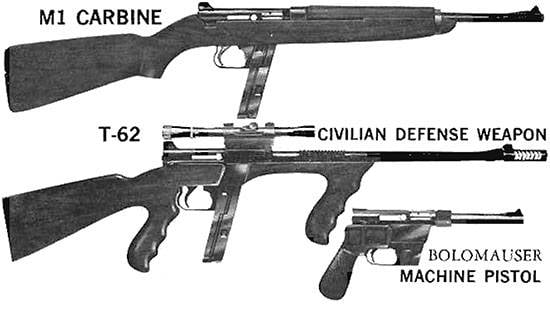
Replicas of historical weapons from the company of Hy Hunter. Photo Weaponland.ru
Like the AR-5 / MA-1 rifle, the new "Explorer" could be sorted into three basic devices: the barrel, the receiver and the butt. The trunk with the box was connected using a large nut. The receiver and the butt were fastened with a screw through the neck of the latter. Having examined the two screw connections, the shooter could put the barrel and box into the corresponding cavities of the butt and close them with the butt pad. Light plastic butt with large air chambers was sealed and could stay on the water.
In the transport position, the dimensions of the AR-7 Explorer rifle were determined solely by the size of the butt. Its length at the same time was only 368 mm. In the combat position, the product had a length of 889 mm. Weight without ammunition - not less than 1,13 kg. Depending on the type of cartridge, its weight, etc., the initial speed of the bullet reached 350-390 m / s. The effective range of shooting - 100 m. These characteristics allowed the use of weapons for recreational shooting, and in hunting small game.
The first ArmaLight AR-7 Explorer series rifles went to gun shops in the 1958 year. The loyal to the new American market quickly appreciated this product, resulting in numerous new orders for the next batch of rifles. Despite the specific look and some inconvenience of exploitation, the AR-7 rifles quickly won back their market share. Such weapons were acquired by amateur gunners, hunters, tourists and other potential operators who were interested in light and easy to use systems.
It soon became clear that the AR-7 rifle is the most successful creation of ArmaLite. New orders and the continued interest of the small community allowed mass production to continue until the early seventies. The latest Explorer products from the development company were removed from the assembly line only in 1973, a decade and a half after the start of production.
It is noteworthy that the termination of the release of AR-7 rifles under the ArmaLite brand did not put an end to stories interesting project. In 1973, the rifle documentation was sold to Charter Arms, which continued mass production and also began to develop the original project. By releasing new rifles and creating original modifications, the new “host” of the project applied certain technical or technological solutions. Charter AR-7 rifles were made before 1990.
But this time the issue of weapons did not stop. Licenses for the production of a successful small-caliber rifle were sold several times to other manufacturers, and thanks to this, the new AR-7 still continues to roll off the assembly line. Now they are produced by the American enterprise Henry Repeating Arms Company. According to various sources, since the end of the fifties, at least 22-23 thousands of AR-7 Explorer rifles of all versions and modifications have been released. The current activity of Henry Replying Arms suggests that this number will continue to increase.
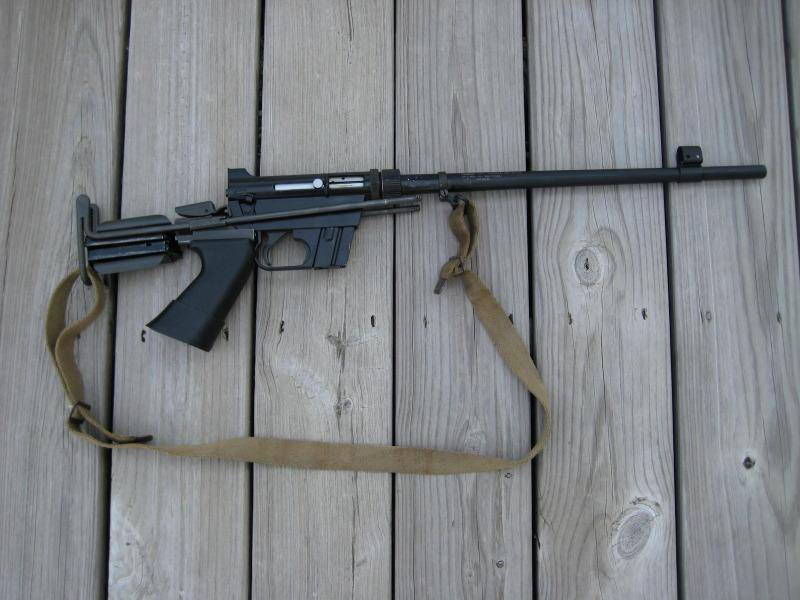
AR-7 version for the Israeli Air Force. Photo Milsurps.com
As serial production of AR-7 became the basis for new models of small arms. Some of them are of particular interest. For example, Hy Hunter decided to use a self-loading rifle automatics when recreating other types of small arms. She introduced the replicas of the M1 Carbine, Thompson and Mauser C-96 systems, based on the automation of a small-caliber rifle by J. Stoner. From the basic “Researcher” they differed, first of all, in fittings corresponding to the appearance of the copied product.
Charter Arms used the ArmaLite design to create the original gun called the Explorer II. As in the case of the projects from “High Hunter”, only a few details were replaced, while the automation and the ammunition systems remained the same.
Of particular interest is the modification of AR-7, created by order of the Israeli air force. Taking into account the developments of the United States, Israel armed its pilots with a special version of the serial AR-7. The new version of the rifle was equipped with a pistol grip from the product FN FAL and was completed with a telescopic wire butt. Later, on the basis of a rifle for the Israeli Air Force weapons were created for the civilian market of the United States.
The main reasons for the commercial success of the ArmaLite AR-7 Explorer rifle and numerous samples based on it can be considered a successful design and the right choice of ammunition. Potential buyers presented a compact, lightweight and easy to use rifle with good fire performance, even suitable for hunting. At the same time the weapon used one of the most popular cartridges. The folding design in this case was an additional factor that could influence the choice of the buyer.
The AR-7 rifle was able to quickly realize its commercial potential, show high sales and get wide distribution. Moreover, the interest in such weapons has not faded so far, as indicated by the preservation of production and the regular appearance of new modified modifications that repeat the basic features of the base sample.
ArmaLite's rifle, called the AR-7 Explorer, had a very remarkable history that looks particularly interesting in the light of the results of the previous AR-5 / MA-1 project. For economic reasons, the customer was unable to initiate mass production of weapons for the Air Force, and the project in its current form was closed as unnecessary. Nevertheless, the contractor continued the development of the project, resulting in the emergence of commercially successful civilian weapons. The AR-7 rifle and its variants have retained their positions in the market for half a century and, most likely, will not abandon them in the near future.
On the materials of the sites:
https://armalite.com/
http://modernfirearms.net/
http://weaponland.ru/
https://americanrifleman.org/
https://henryusa.com/
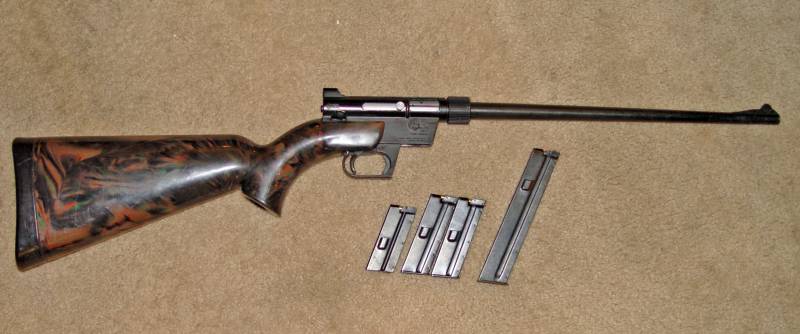
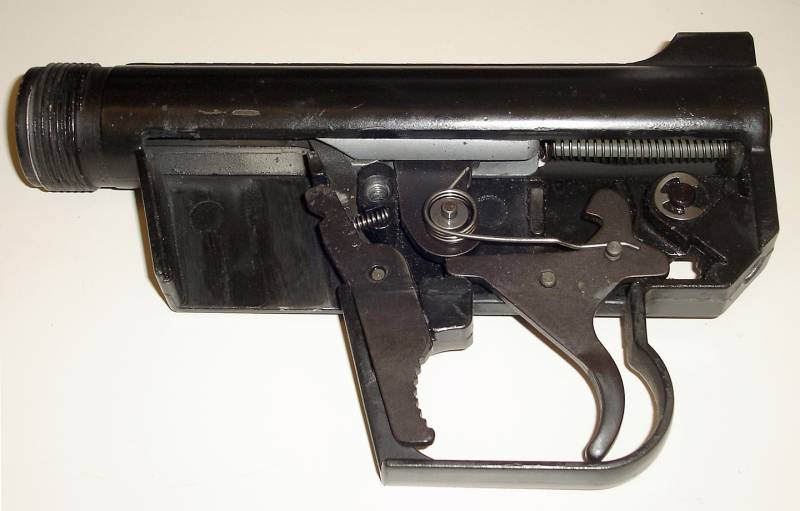
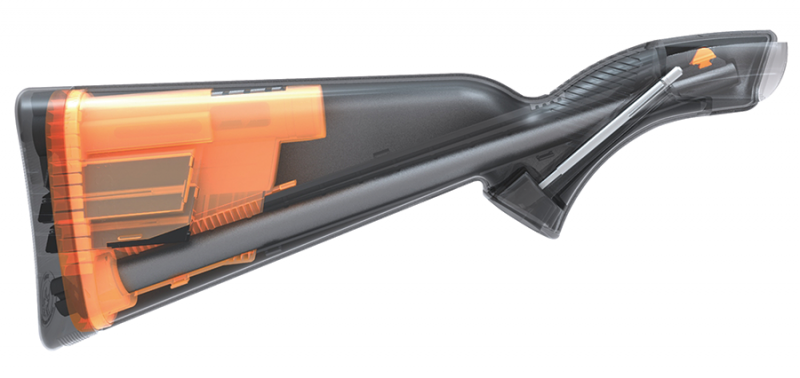
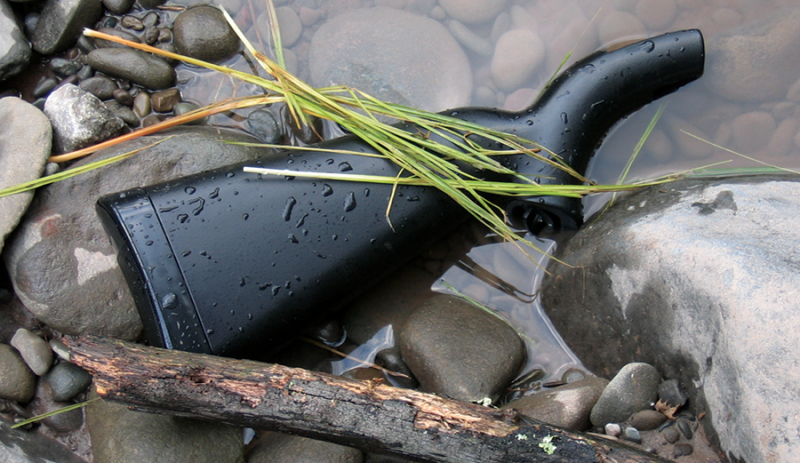

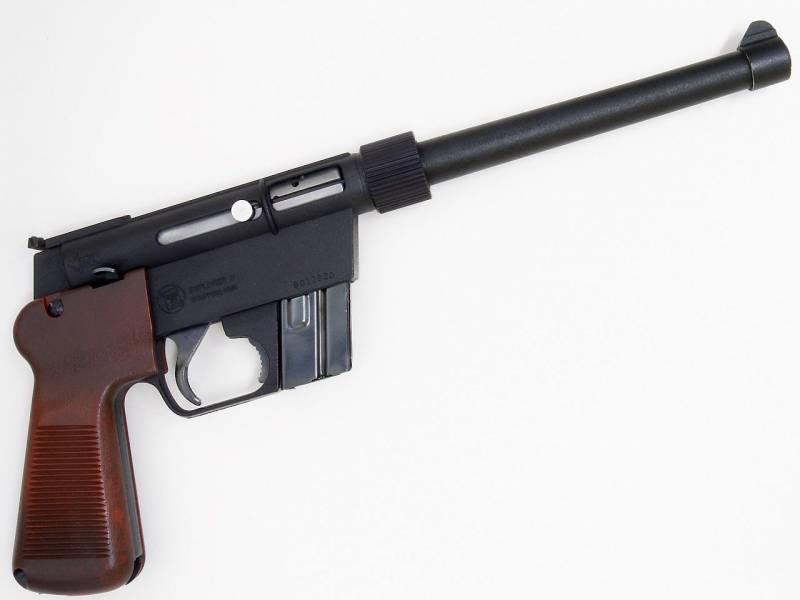
Information